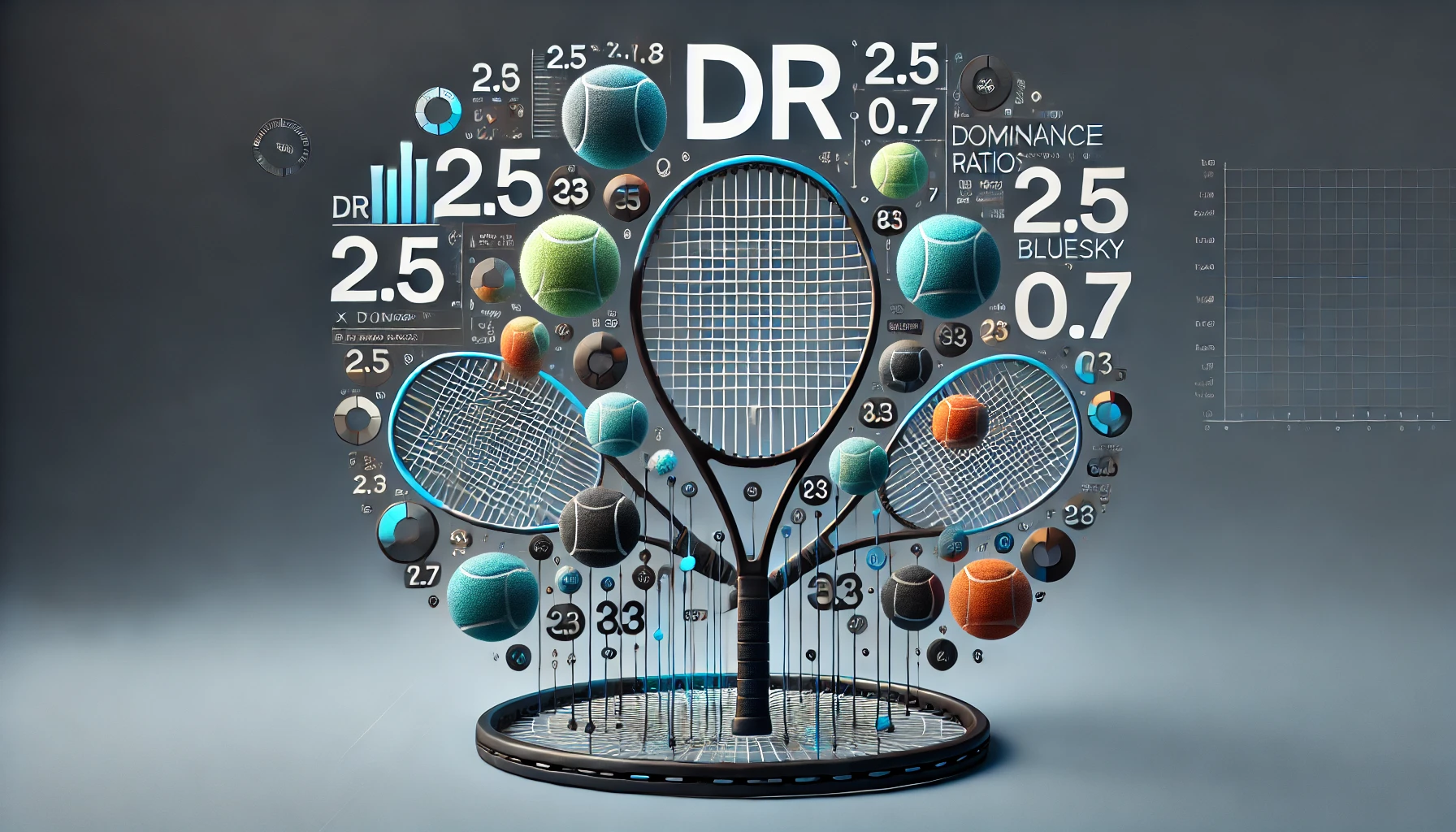In professional tennis, raw statistics such as winners and unforced errors only provide a fragmented view of a player’s performance. More refined metrics, like Dominance Ratio (DR), offer a clearer understanding of match control, particularly in women’s tennis, where return play is often as decisive as serving efficiency.
How is Dominance Ratio Calculated?
The Dominance Ratio is defined as:
DR = (Opponent’s Service Points Won) ÷ (Own Service Points Lost)
This formula measures a player’s ability to win points on return relative to the points they concede on serve. A DR above 1.0 signifies that the player is consistently exerting pressure in return games, winning more points than they lose on serve—a strong indicator of control. A DR below 1.0 suggests the player is being outperformed in key exchanges, even if they remain competitive in the scoreline.
Why Dominance Ratio Matters
Unlike traditional match statistics, DR offers a more nuanced reflection of competitive balance, revealing underlying trends that might not be apparent in a simple set score. It is particularly valuable in the WTA circuit, where return play often plays a more critical role than in the ATP.
- Beyond the Scoreline: A player might win in straight sets yet register a DR close to 1.0, indicating a match that was far more balanced than the final result suggests. Conversely, a DR well above 1.5 often correlates with a dominant performance, even if the score appears close.
- Return-Oriented Nature of Women’s Tennis: Unlike the men’s game, where serve dominance can dictate outcomes, women’s tennis places greater emphasis on return efficiency and baseline exchanges. DR effectively captures this dynamic by weighting return points won against service points lost.
- Performance Sustainability and Predictive Value: A consistently high DR (e.g., 1.3 or above over multiple matches) is a strong indicator of a player’s ability to dictate play and sustain success. Players like Iga Swiatek and Aryna Sabalenka, who frequently post high DRs, are often able to maintain their dominance across different surfaces and match conditions.
Interpreting Dominance Ratio in Match Analysis
- DR > 1.5: A clear sign of match dominance, usually indicating a commanding performance.
- DR between 1.0 – 1.5: A well-contested match, but with the player in question maintaining control.
- DR near 1.0: A tightly balanced contest where momentum shifts frequently.
- DR < 1.0: The player was largely outperformed, even if the scoreline suggests a close battle.
Final Thoughts
While DR is not a standalone predictor of success, it serves as an invaluable analytical tool in assessing match performance beyond the scoreline. It highlights not just who won, but how they controlled key phases of play. For players, coaches, and analysts, tracking DR across tournaments can provide deeper insights into long-term form and potential vulnerabilities—an essential aspect in today’s data-driven approach to elite tennis.
